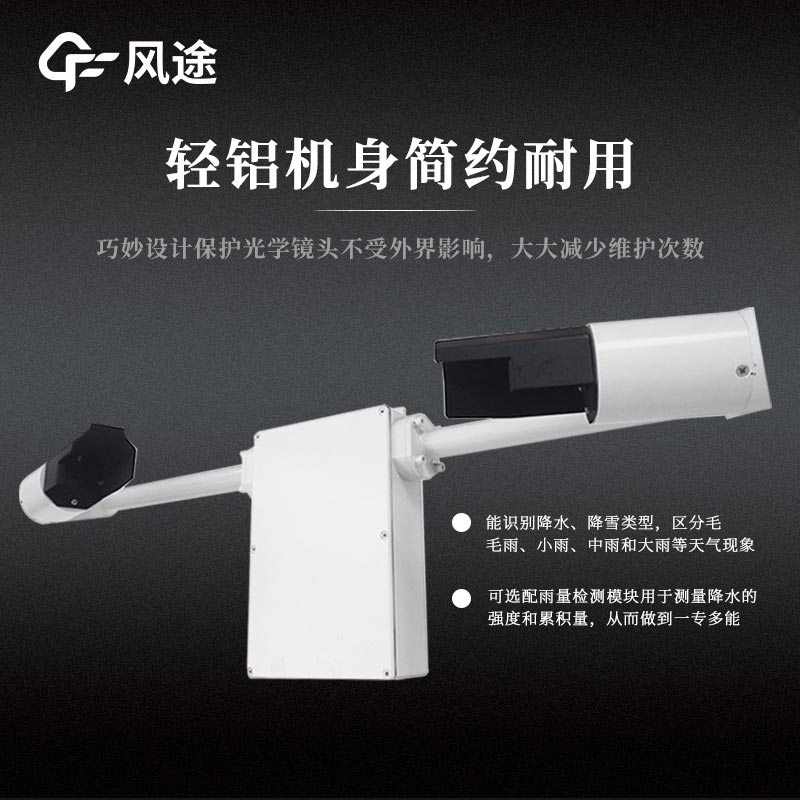Shandong Fengtu IOT Technology Co., Ltd
Sales Manager:Ms. Emily Wang
Cel,Whatsapp,Wechat:+86 15898932201
Email:info@fengtutec.com
Add:No. 155 Optoelectronic Industry Accelerator, Gaoxin District, Weifang, Shandong, China

Sales Manager:Ms. Emily Wang
Cel,Whatsapp,Wechat:+86 15898932201
Email:info@fengtutec.com
Add:No. 155 Optoelectronic Industry Accelerator, Gaoxin District, Weifang, Shandong, China
time:2025-02-20 08:55:49 source:Weather Station viewed:253 time
In the field of meteorology, visibility is a crucial observation indicator, usually accurately represented by the meteorological optical range. In the aviation field, the precise measurement of the Visibility detector can ensure the safety of aircraft takeoffs and landings; in the transportation field, it can provide important references for road traffic safety and reduce traffic accidents caused by low visibility.
The definition of the meteorological optical range is very rigorous. It refers to a parallel light beam with a color temperature of 2700K emitted by an incandescent lamp. When its luminous flux propagates in the complex medium of the atmosphere, it will be gradually weakened by various factors. Water vapor, dust, aerosols, etc. in the atmosphere will all interfere with the propagation of light. When the luminous flux is weakened to 5% of its initial value, the path length that the light beam has passed through is the meteorological optical range. In routine ground meteorological observation work, for the convenience of recording and data comparison, the unit of measurement is generally the meter, with the symbol "m".
As a professional device for measuring visibility, the Visibility detector mainly consists of three core components: a transmitter, a receiver, and a processor. The function of the transmitter is to emit near-infrared light pulses. When these pulsed light beams propagate in the air, they will encounter various suspended particles in the air, such as dust, water vapor, aerosols, etc., and then the scattering phenomenon will occur. In foggy weather, with a high water vapor content, the scattering phenomenon is more obvious. The scattered light is keenly captured and received by the receiver. Subsequently, the built-in processor of the instrument plays a key role. Based on the relevant data of the scattered light received, it uses complex and precise algorithms to estimate the meteorological optical range, that is, the visibility we mentioned, from the scattering coefficient.

In an era when tourism is booming, tourists are no longer satisfied with just beautiful scenery. They are paying increasing attention to the environmental quality of scenic spots, especially the air quality. Thus, the negative oxygen ion monitoring system has become an indispensable part of modern s...
An Atmospheric Visibility Sensor is a professional meteorological instrument used to quantify atmospheric transparency. It provides precise visibility data by measuring the degree of light attenuation within a specific range. In fields such as traffic management, meteorological observation, and envi...
The development of Portable Weather Stations stems from the need for rapid, flexible, and temporary meteorological observations, applied in fields such as emergency disaster reduction, scientific expeditions, and military support to compensate for the shortcomings of fixed stations.Real-time meteoro...
In the realm of tunnel operation management, ensuring driving safety and air quality is of paramount importance. The Tunnel Visibility Detector, as a specialized monitoring device, provides robust support for tunnel safety by accurately measuring carbon monoxide (CO) and visibility (VI).Poor v...